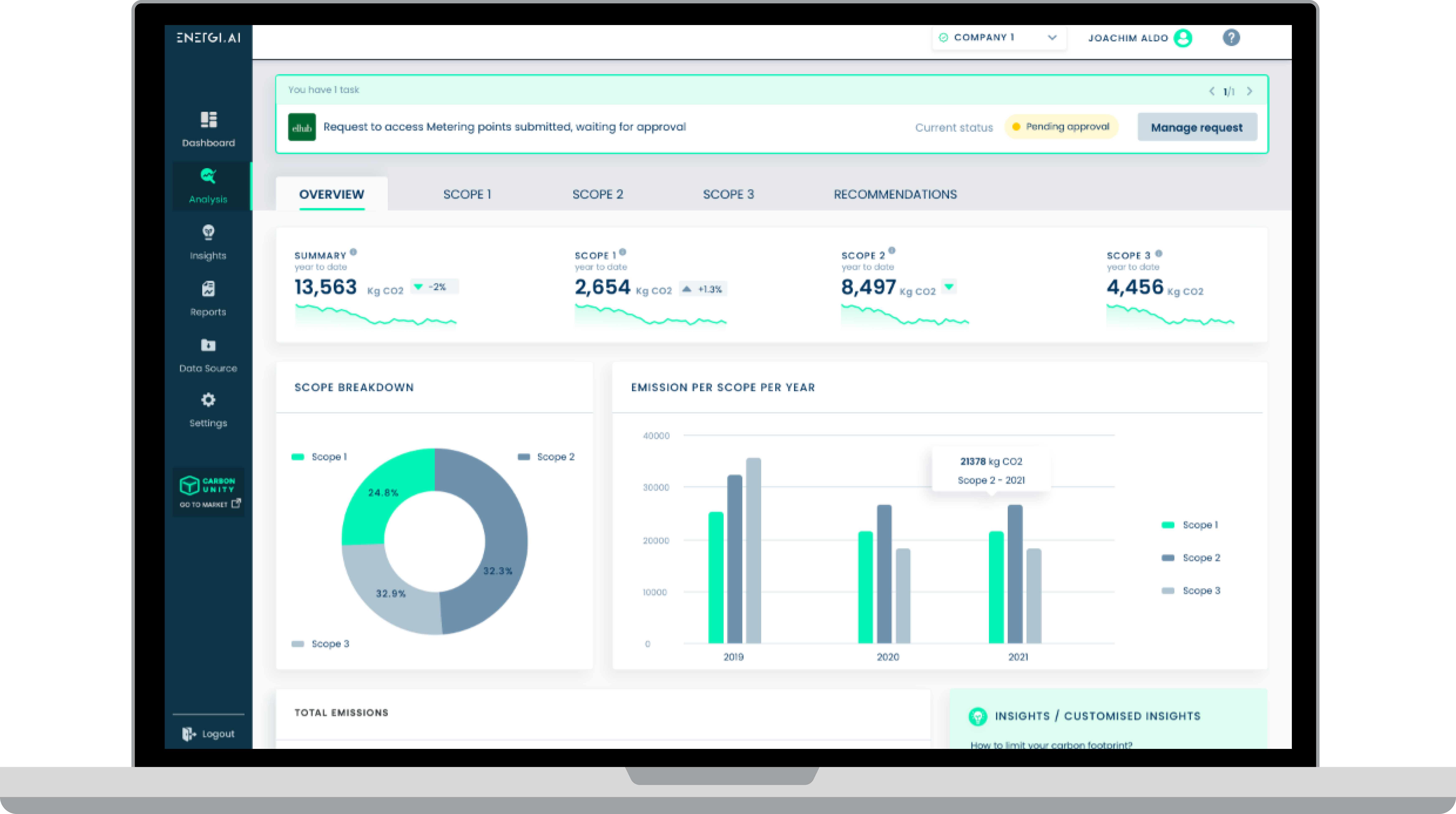
If your organization wants to learn more about carbon accounting, then this one's for you! We will cover what you need to know about carbon accounting, the Greenhouse Gas Protocol, how COP26 changed the race for net zero for businesses and a brief description of our tool.
What is carbon accounting?
In its simplest form - carbon accounting is the process that organizations use to measure their greenhouse gas (GHG) emissions so they can fully understand their carbon footprint and set targets to reduce their emissions.
Why is it important?
Carbon accounting is first and foremost important for our planet. To keep temperatures under a 1.5C objective, businesses have to collectively cut emissions by half by the end of the decade and nations would have to enforce that.
As new regulations arise, it is a matter of time before it will become a regulatory requirement across the globe.
If you want to stay competitive amongst sustainable companies and to be part of the race towards zero - carbon accounting is the first step you should take. What gets measured gets managed!
Future proofing
It is a matter of time before new regulations will affect companies and CO2 taxes are booming. Companies realize the urgency of becoming carbon-neutral and are building new strategies before it is too late.
Point of difference
Carbon reporting can make a market differentiation, setting an organization apart from competitors. Not just by gaining potential customers who are attracted by this approach but also investors and other stakeholders involved.
Green funding and capital
Carbon emission control will bring a massive shift in the availability of capital available for businesses. Investors will penalize polluting businesses with a higher cost of capital and reward greener ones by making it easier to access funding.
PR opportunity
Companies who step forward and voluntarily display their emissions in an attempt to reduce them will benefit from a stronger public perception. They will be seen as organizations which genuinely care.
Attract and keep talents
In an era often depicted as being a war for talent, using carbon accounting as a tool to demonstrate your environmental credentials will help to attract – and retain – the best recruits. High staff churn is expensive.
Cost saving
Carbon accounting enables your business to reduce costs in the short term ( Savings from reduced energy bills etc) while strengthening your operational and financial resilience in the longer term.
The Greenhouse Gas Protocol
To measure carbon emissions, it is most common to use the method called the Greenhouse Gas Protocol. The protocol was established 15 years ago to develop and promote the use of best practices for accounting and reporting GHG emissions.
GHG-protocol divides all your emissions into three categories:
Scope 1 emissions:
Known as direct emissions, these are emissions from activities owned or controlled by an organization. Examples include emissions from combustion in owned or controlled boilers, furnaces and vehicles; and emissions from chemical production in owned or controlled process equipment.
Scope 2 emissions:
Called indirect emissions, these are associated with an organization’s consumption of electricity, heat, steam and cooling. They are a consequence of an organization’s activities or choice of supplier, but occur at sources the business does not directly own or control. Examples would be air-conditioning and electricity use for lighting, lifts and IT equipment.
Scope 3 emissions:
These are the wider-reaching emissions caused by the value chain of business operation. Examples are business travel or the transport of goods to or from a site. Or the sourcing of raw materials, development of product packaging and the disposal of waste. Scope 3 emissions also include the lifetime emissions of sold products. Car manufacturers, for example, must account for the emissions of each car when it is in use.

COP26 changed the race to net zero for businesses
After COP26 (UN Climate change conference) in Glasgow we saw cross sector collaboration through diverse industries and public and private making pledges. Companies realice the urgency of becoming carbon-neutral and are building new strategies before it is too late.
We have moved from value-added issues to a state where large companies (for now) are held to a standard of tracking emissions, reporting them and reducing them. It requires new implementations that must be enforced, not only for Scope 1 & 2 emissions, but also for scope 3 emissions.
The demands from investors, customers and employees are reshaping the way we all are doing business. It is the decade of change - the decade of action.
Put your carbon accounting on autopilot with Energi.AI
With Energi.AI, you do not need climate consultants to measure your emissions.
Energi.AI takes away the hassle of collecting the necessary data for you, converts the data into CO2 and helps you achieve carbon neutrality faster. We are an AI-powered, automation carbon accounting platform. Connect your ERP or other systems with our integrations.

There are four easy steps to get started:
- Login in to Energi.AI
- Connect your profile to integrated systems. All needed data will be achieved automatically
- Answer a few questions to increase the accuracy of our data
- You are ready - we take care of the rest! Surf through your consumption data, set your goal and start your journey to cost and emission reduction.
We will continually add functionalities to secure the best customer experience possible.
To conclude
Little by little laws will be enforced and carbon accounting will become a core necessity in business reporting. It's never too early to begin a net zero strategy as the demand from consumers, and the policies will be imposed by local governments.
We look forward to seeing you take action!
For more information, contact us: christel@energi.ai
